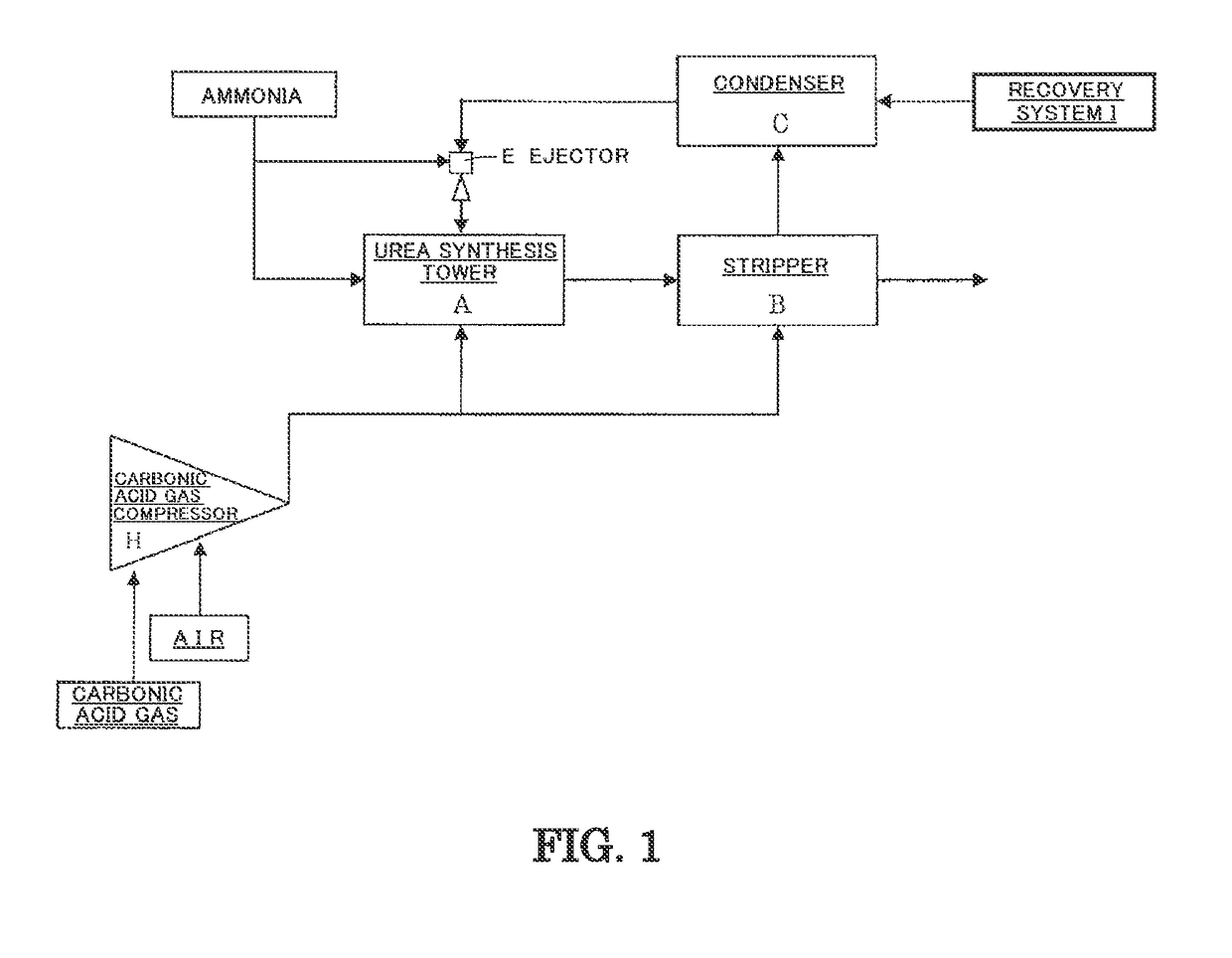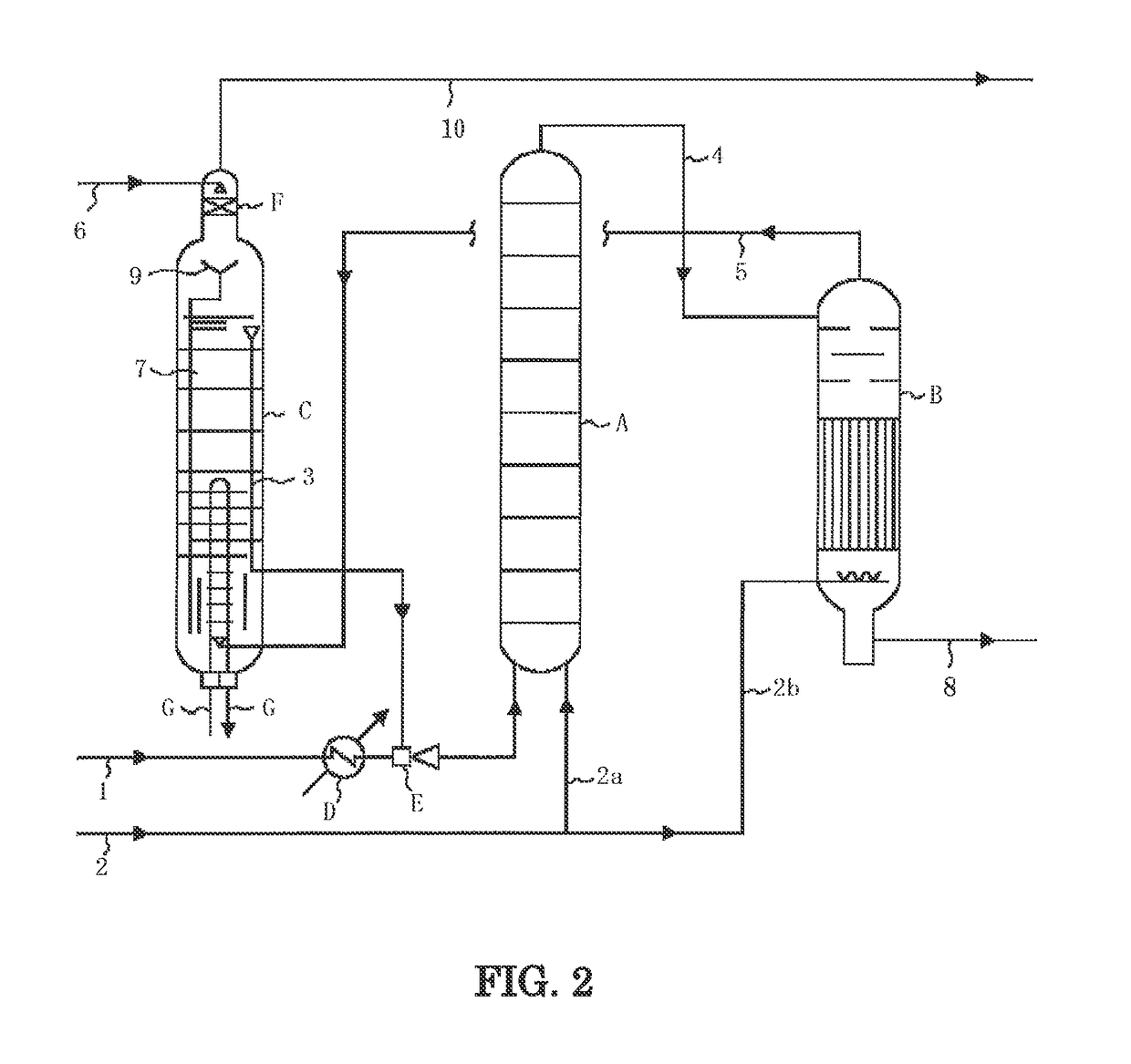Urea synthesis method
a urea and urea technology, applied in the direction of organic chemistry, chemical/physical/physical-chemical processes, solid-state diffusion coatings, etc., can solve the problems of increasing the reducing reaction yield, adversely affecting running costs, etc., and achieves enhanced reaction yield, small amount of corrosion prevention oxygen, and small amount of corrosion resistance
- Summary
- Abstract
- Description
- Claims
- Application Information
AI Technical Summary
Benefits of technology
Problems solved by technology
Method used
Image
Examples
examples
[0104]The present invention will be described more specifically and more intelligibly below by Examples.
[0105]A test was carried out under the following conditions using the measurement apparatus shown in FIG. 3. The measurement apparatus shown in FIG. 3 comprises an autoclave (34) for synthesizing urea, and an electrochemical measurement apparatus for measuring the corrosion behavior of a material. Three electrodes [a working electrode (31), a reference electrode (32) comprising Pt, and a counter electrode (33) comprising Pt] are installed in the autoclave (34), and the control and measurement of the potential between the electrodes and the measurement of current are carried out using a potentiostat module (36). In addition, aurea synthesis liquid is stirred by an agitator (35), and anticorrosive air (corrosion prevention oxygen) is fed from an air feed nozzle (37).
[0106]The relationship between the principle of this measurement and anticorrosive performance due to passivation film...
PUM
| Property | Measurement | Unit |
|---|---|---|
| temperatures | aaaaa | aaaaa |
| temperature | aaaaa | aaaaa |
| temperature | aaaaa | aaaaa |
Abstract
Description
Claims
Application Information
 Login to View More
Login to View More - R&D
- Intellectual Property
- Life Sciences
- Materials
- Tech Scout
- Unparalleled Data Quality
- Higher Quality Content
- 60% Fewer Hallucinations
Browse by: Latest US Patents, China's latest patents, Technical Efficacy Thesaurus, Application Domain, Technology Topic, Popular Technical Reports.
© 2025 PatSnap. All rights reserved.Legal|Privacy policy|Modern Slavery Act Transparency Statement|Sitemap|About US| Contact US: help@patsnap.com



